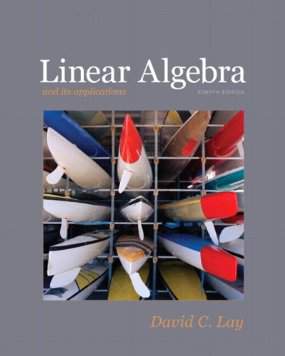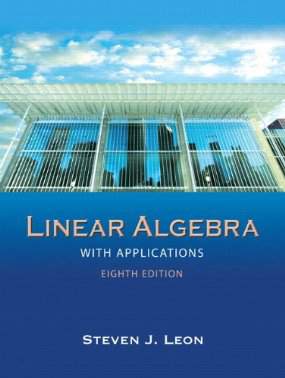Connecting...

This is a quick preview of the lesson. For full access, please Log In or Sign up.
For more information, please see full course syllabus of Linear Algebra
For more information, please see full course syllabus of Linear Algebra
Linear Algebra Solutions of Linear Systems, Part 1
Lecture Description
Now we’re going to step away from the basics and move on to applications of what you have learned. Most algebra classes cover solving linear systems for each variable using a few properties and operations. If you remember learning about that, then apply it here, and you’ll be able to see how solving a system with matrices isn’t that much different. For now, we’ll introduce the theory to you, but in the next video we’ll go over some examples to help you get a better understanding of what’s going on.
Bookmark & Share
Embed
Share this knowledge with your friends!
Copy & Paste this embed code into your website’s HTML
Please ensure that your website editor is in text mode when you paste the code.(In Wordpress, the mode button is on the top right corner.)
×
Since this lesson is not free, only the preview will appear on your website.
- - Allow users to view the embedded video in full-size.
Next Lecture
Previous Lecture










































 Answer Engine
Answer Engine




1 answer
Fri Nov 18, 2016 8:29 PM
Post by El Einstein on November 7, 2016
At time 3:11. You did not specify if the matrices A, B, C were augmented or coefficient matrices. I am a bit confused. Can you explain on how to use this term --> RRE . Do you use the term "RRE" strictly for augmented matrices or strictly for coefficient matrices OR is it used freely for both types of matrices. I hope this makes sense.
1 answer
Sat Nov 15, 2014 10:28 PM
Post by Imran Malik on November 12, 2014
When you divided row 2 by 2 around 20 minutes in, could you not have just added that row with the 4th row to make turn the leading entry 2 of row 2 into a 0?
1 answer
Thu Nov 7, 2013 2:48 PM
Post by Eddie Chan on November 7, 2013
is there a lecture about smith normal form?
1 answer
Tue Nov 5, 2013 2:16 PM
Post by jawhara oukhija on November 5, 2013
Hi is RRE the same as Gauss Jordan? Thanks for clearing.
0 answers
Post by hajar maazia on July 5, 2013
does *
1 answer
Sat Jul 6, 2013 5:47 AM
Post by hajar maazia on July 5, 2013
i would like to ask you .. Dores RRE mean elementary matrices, because my professor didint talk at all about RRE instead he talked about elementary matrices. Thank you
1 answer
Mon Jun 3, 2013 2:33 AM
Post by Manfred Berger on June 2, 2013
Am I missing something essential here or is RRE the Upper Triangular Form with the leading entries normalized to one?
1 answer
Mon Feb 4, 2013 11:09 PM
Post by Cecilia Azurdia on February 4, 2013
CAN THE 1'S BE NEGATIVE?
1 answer
Fri Oct 5, 2012 3:45 AM
Post by Suhaib Hasan on October 5, 2012
So do all Matrices have an RRE form? If not, how do you find which ones have one and others that don't?
1 answer
Mon Jul 23, 2012 5:54 PM
Post by Winnie So on July 22, 2012
Hi Raffi, Is the 1 in the 5th column, 3rd row a leading entry? I thought it will be but am not too certain?
0 answers
Post by Mohammed Altannak on March 5, 2012
Looking Forowrd to see you next time =)
0 answers
Post by Jason Mannion on October 10, 2011
The only point of criticism I can give here is that there are no practice problems available for each lecture. That would be really nice. Besides that, these lessons are worthy of some of the highest praise.